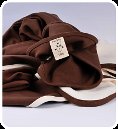Posted July 6, 2011
Losing inches from your chest, thighs, arms, hips, waist and buttocks is a clear sign of fat loss and fitness progress. Here’s how to use a tape measure correctly:
Use a plastic tape measure. Cloth varieties can stretch out over time and give you distorted measurements.
Position the tape correctly. Don’t pull the tape in tightly to get a smaller measurement. “Make sure the tape is snug, does not compress your skin and is parallel to the floor,” says Maria Kinirons, director of food and nutrition for Weight Watchers North America. Wear thin fabrics – or better yet, nothing at all.
Breathe normally. Don’t suck your breath in or exhale forcefully when measuring your waist or chest.
Look straight ahead. Stand tall with your feet together – or slightly apart if you’re measuring your thighs – preferably in front of a full-length mirror so you can see the tape’s position. Don’t slouch down to look at your reading. For the most accurate results, ask a family member or friend to help.
Take monthly measurements. Don’t measure too often: readings can change from day to day – and even at different points in a single day – based on what you eat and drink. Pick one day a month and measure yourself first thing in the morning. If you’re female, don’t schedule this just before or during your period, when you tend to be more bloated.
Measure at the right place. For your chest, measure around the largest spot, generally at the nipple line. Waist: just above your hipbones, roughly at your belly button. Hips: the widest part of your buttocks. Arms: about three inches above your elbow, at the largest point. Thighs: the biggest part of your upper legs.





